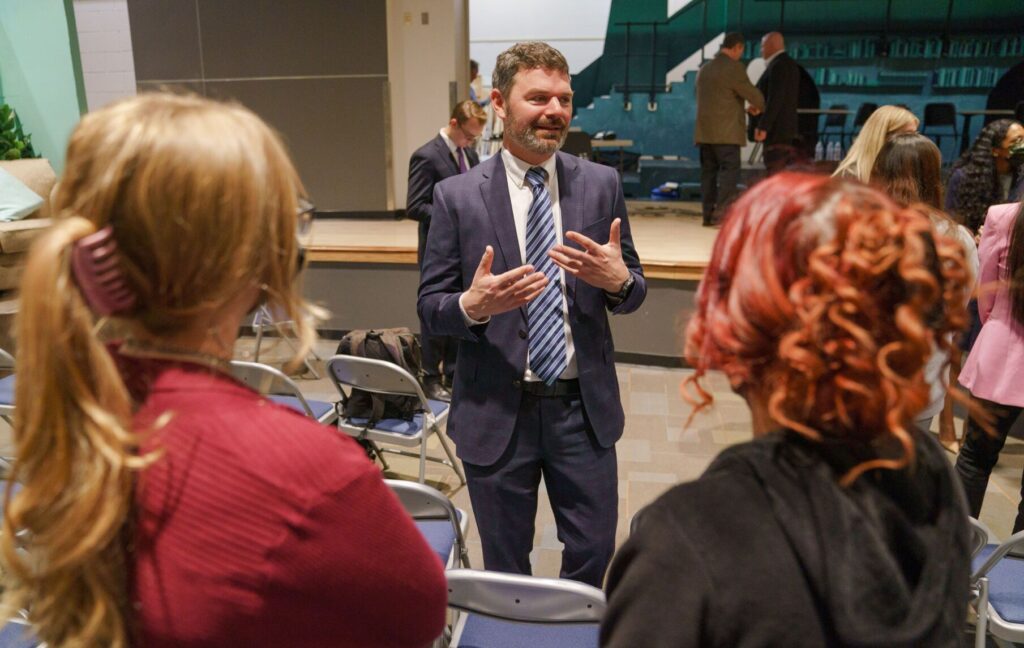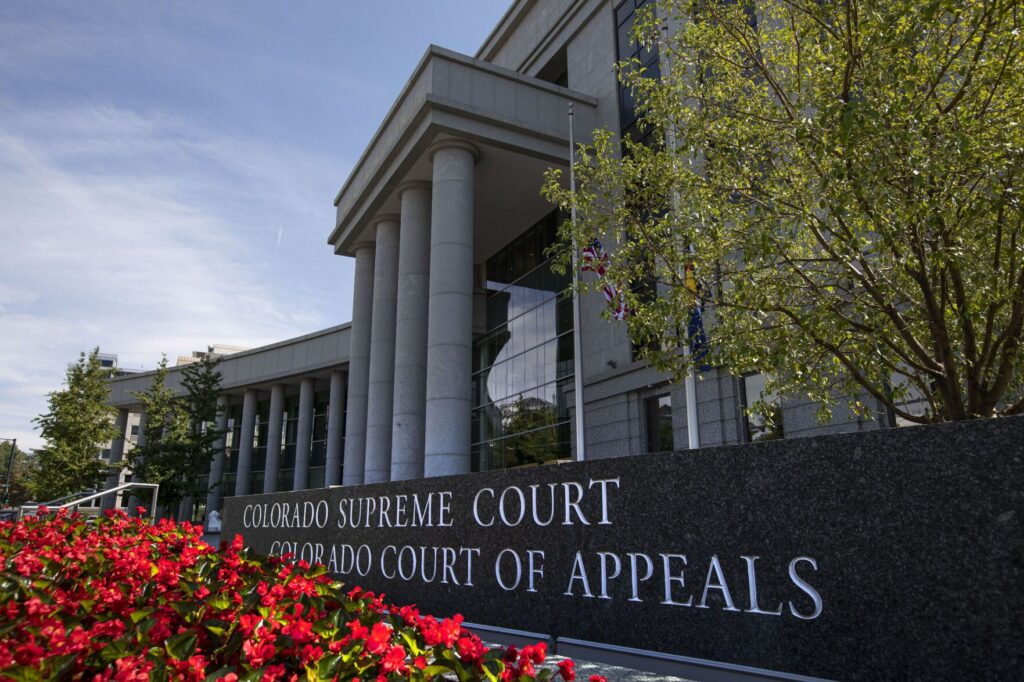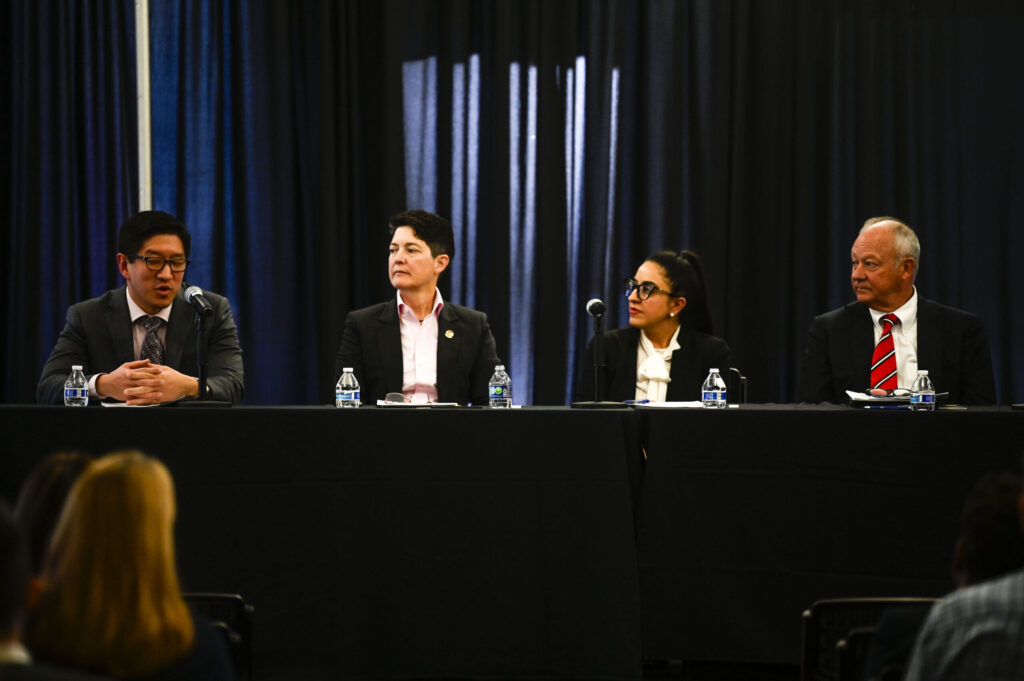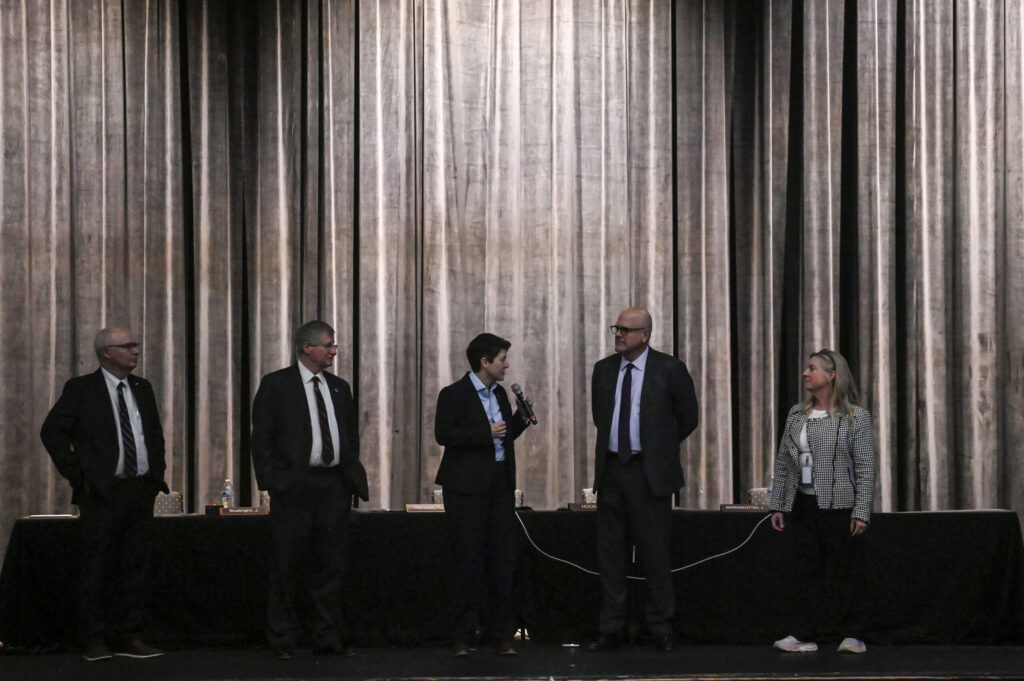Colorado Supreme Court develops chief justice ‘onboarding’ plan, an outlier among states

The Colorado Supreme Court has joined an apparent minority of its peers across the country in laying down a written transition plan for chief justices, who are executive leaders of the judicial branch in addition to their roles deciding cases.
A “chief justice onboarding” document, drafted in 2022, outlines the duties of incoming Colorado chief justices three to four months before their swearing-in date, and lists their obligations throughout the first two years of their term.
The to-do list includes meetings with high-ranking officials, being looped into “any unusual issues,” learning about the judiciary’s interactions with the legislature, and discussing personnel and open records processes.
“The plan contains a number of things that were done in previous transitions, but many items in the plan have not been a formal part of previous transitions,” said Jon Sarché, deputy public information officer for the judicial branch. He added the plan is a “living document” that will undergo further modifications.
Although Colorado has had four chief justices in the past decade, the onboarding plan came about as the result of an independent investigation into a contracting scandal within the Judicial Department. Former Chief Justice Nathan B. Coats recently received an unprecedented censure for his role in allowing a services contract to proceed with a judicial employee who was herself suspected of misconduct.
The sanction reflected the findings of Robert C. Troyer and Nicholas E. Mitchell, who released a report in June 2022 confirming Coats had inadequate training on the administrative duties of a chief justice and, consequently, mismanaged the crisis.
“Coats described his preparation for the position as ‘learning on the job,'” Troyer and Mitchell wrote. “The Court must invest in equipping Chief Justices to handle such issues by providing formal training and orientation, in advance, before problems arise.”
The current chief justice, Brian D. Boatright, corroborated the skeletal process for acclimating previous chiefs to the role.
“My onboarding process was, I sat across the table from Chief Justice Coats and he said, ‘What would you like to know?’ And a month later I was chief,” said Boatright at a legal event earlier this year.
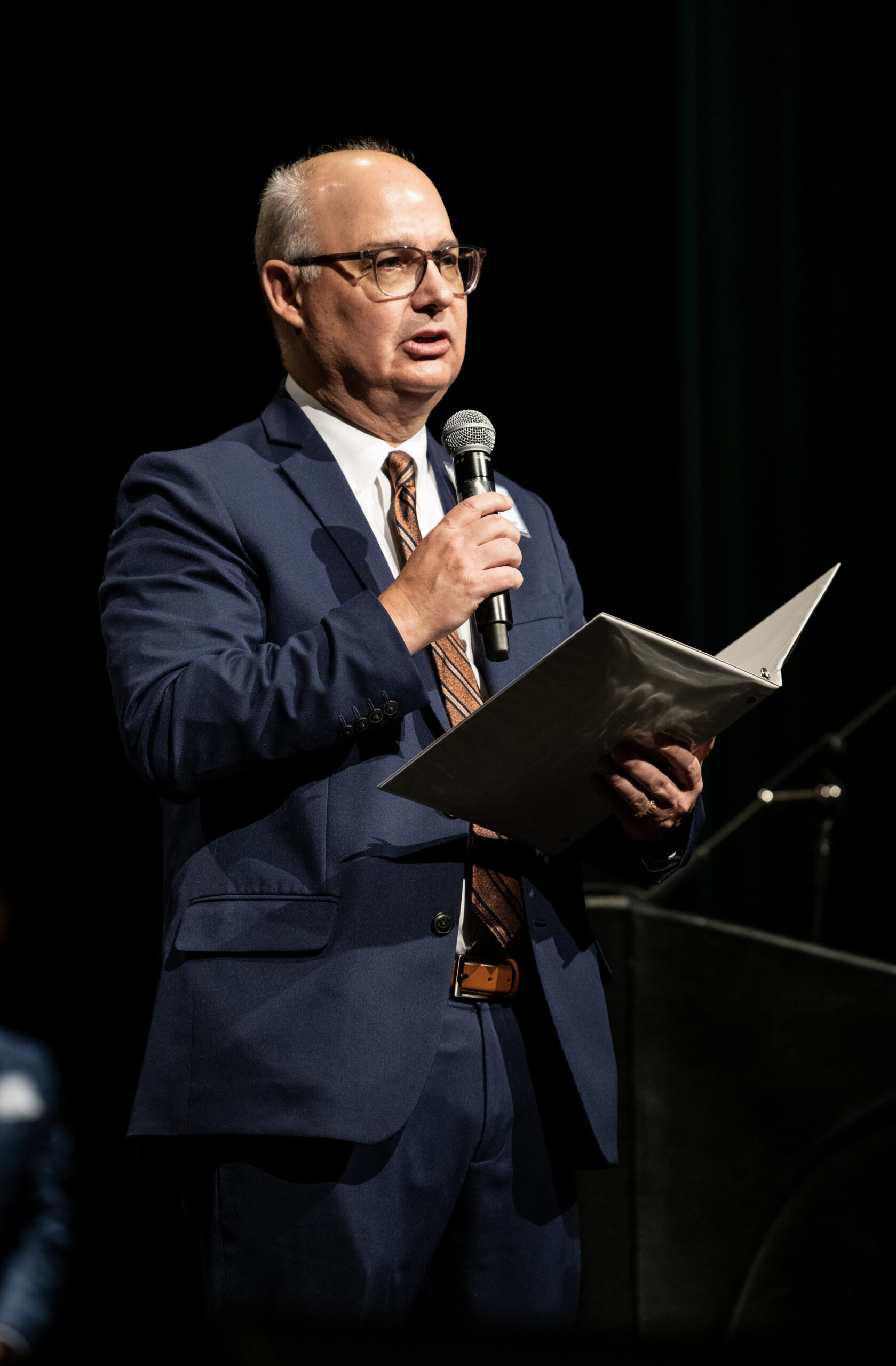
Upon Coats’ departure at the end of 2020, the Supreme Court adopted a rotational system for selecting its chief justice. Boatright will end his time in the top post next summer, after which Justice Monica M. Márquez will take over. The onboarding document provides an outline of what will happen to facilitate the transition.
Three to four months before becoming chief, Márquez will receive human resources training, attend committee and chief judges’ meetings, and receive tutoring about the judiciary’s budget. She will also meet with the governor’s office, attorney general’s office and various bar associations.
After being sworn in, the new chief justice will schedule discussions with the leaders of each of Colorado’s 22 judicial districts and communicate her priorities to the entire department. During the first two years as chief, Márquez will meet annually with every chief judge and receive a “360 evaluation” of her own performance.
Colorado Politics spoke with representatives from several state supreme courts and found Colorado’s written transition plan is not the norm.
“I think it would be wise for our Supreme Court to consider something like this proactively,” said Meredith Montgomery, the clerk of Alaska’s appellate courts. “I believe a lack of formalized policy may be attributed to our historically smooth and amicable transitions.”
Some states have a “chief-justice-in-waiting” system similar to Colorado. Arizona designates a vice chief justice to serve a term alongside the chief, attending administrative meetings and learning the duties of the job prior to ascending to the top spot. Georgia likewise selects a “presiding justice” who is involved in budgeting and legislative tasks prior to becoming chief.
“I think it’s fair to say that the Supreme Court of Georgia’s onboarding process is providing presiding justices with the opportunity and experience to learn the job. We do have a process, just not a written plan,” said Kathleen Joyner, public information officer for the court.
More akin to Colorado, Oregon’s administrative office for the courts has prepared an orientation guide for incoming chief justices, providing information about media relations, human resources and various programs within the judiciary.
North Carolina, where voters elect the chief justice, also creates a transition packet. Although there is no timed task list as there is in Colorado’s document, the packet provides an overview of the state’s judicial department, past recommendations and reports, and a description of the appointments the chief justice needs to make to various panels.
Sarché, the spokesperson for Colorado’s judiciary, said there are also training programs underway for the chief judges of the trial courts and for the Court of Appeals. The appellate court already has an “extensive onboarding program,” he said, but the trial courts are developing their own.



